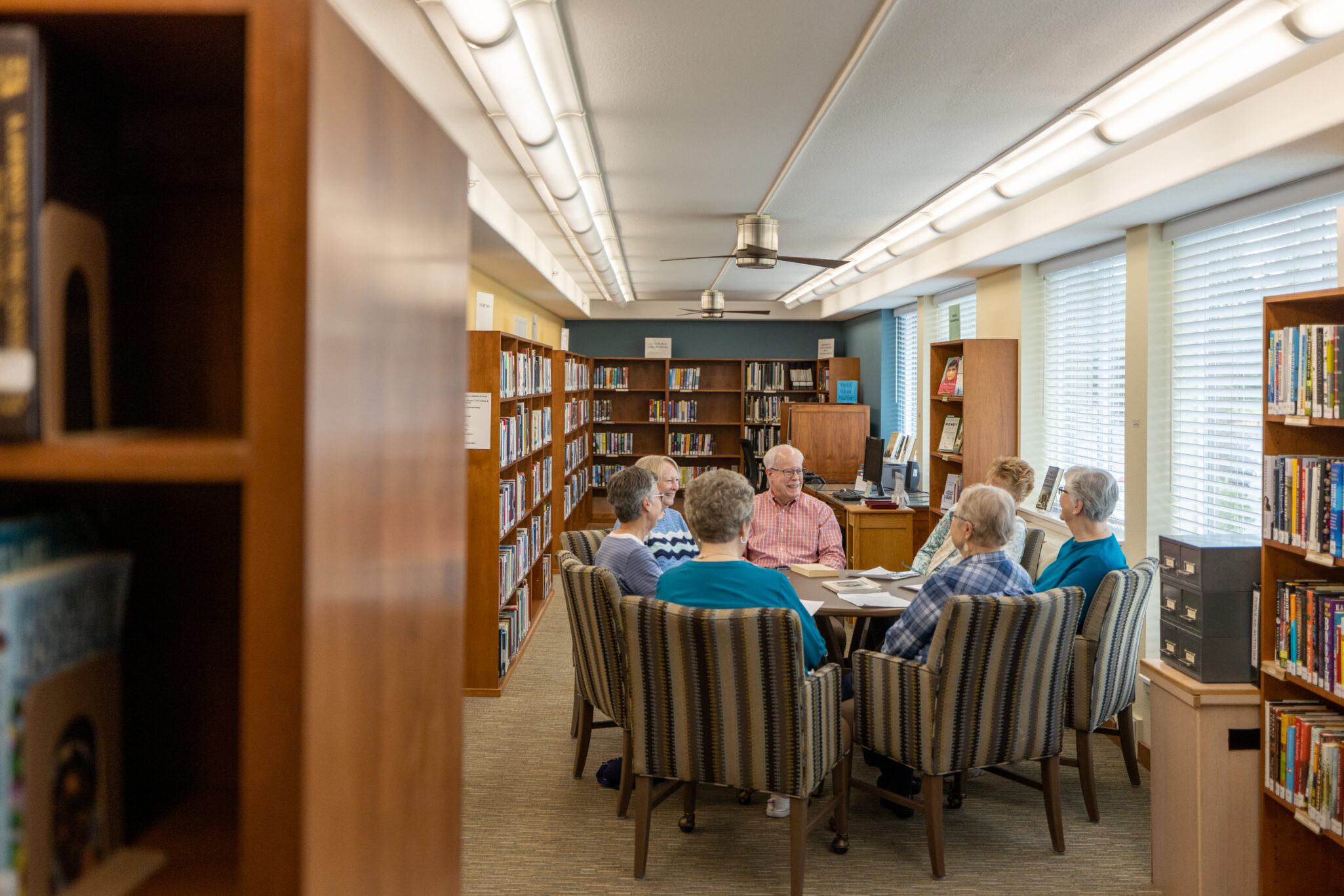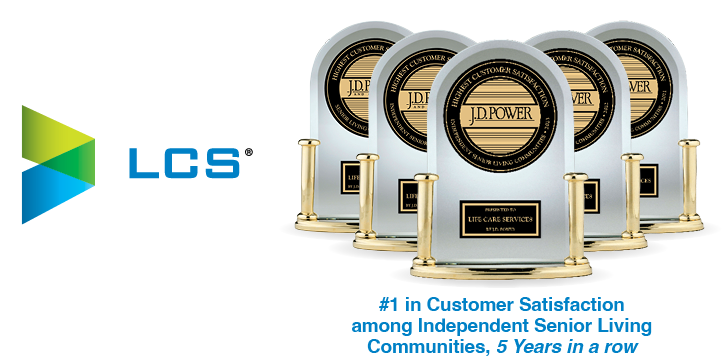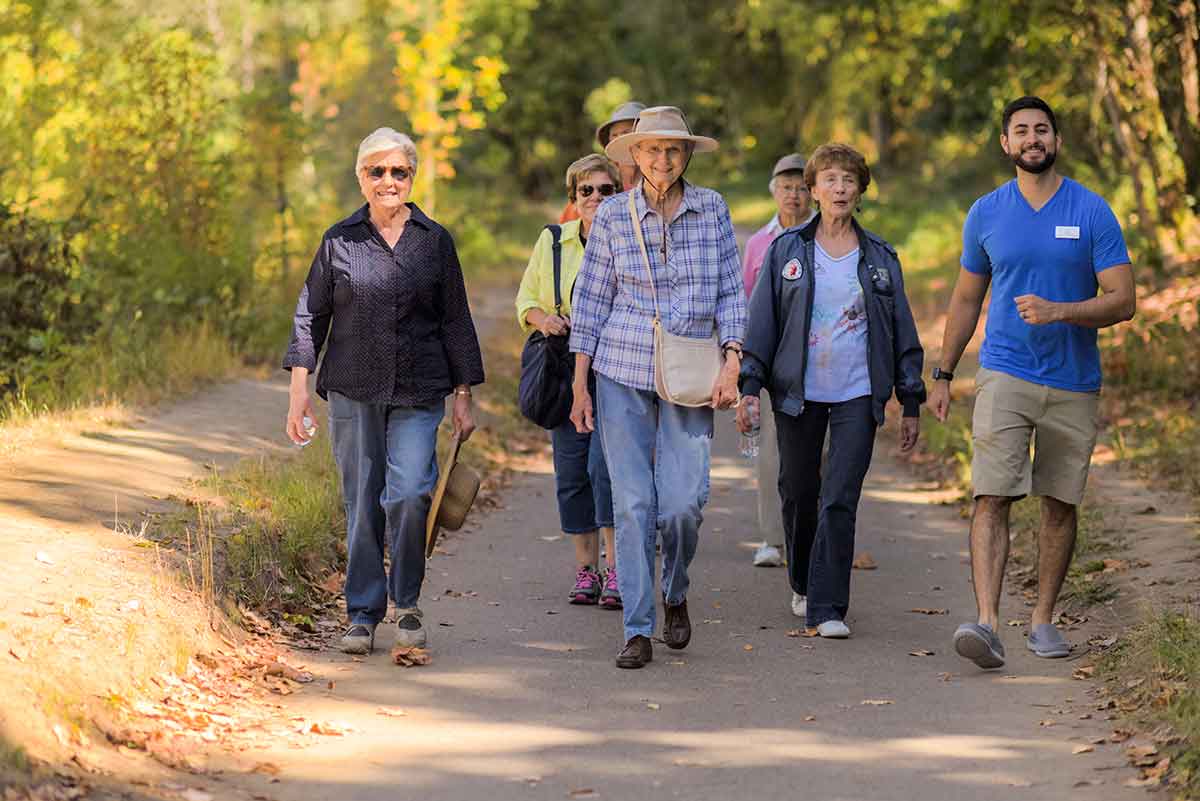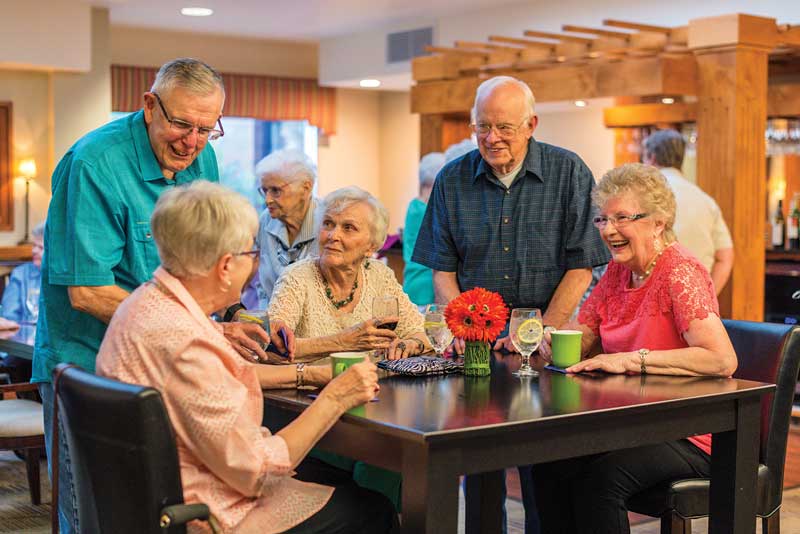5 Senior Living Misconceptions
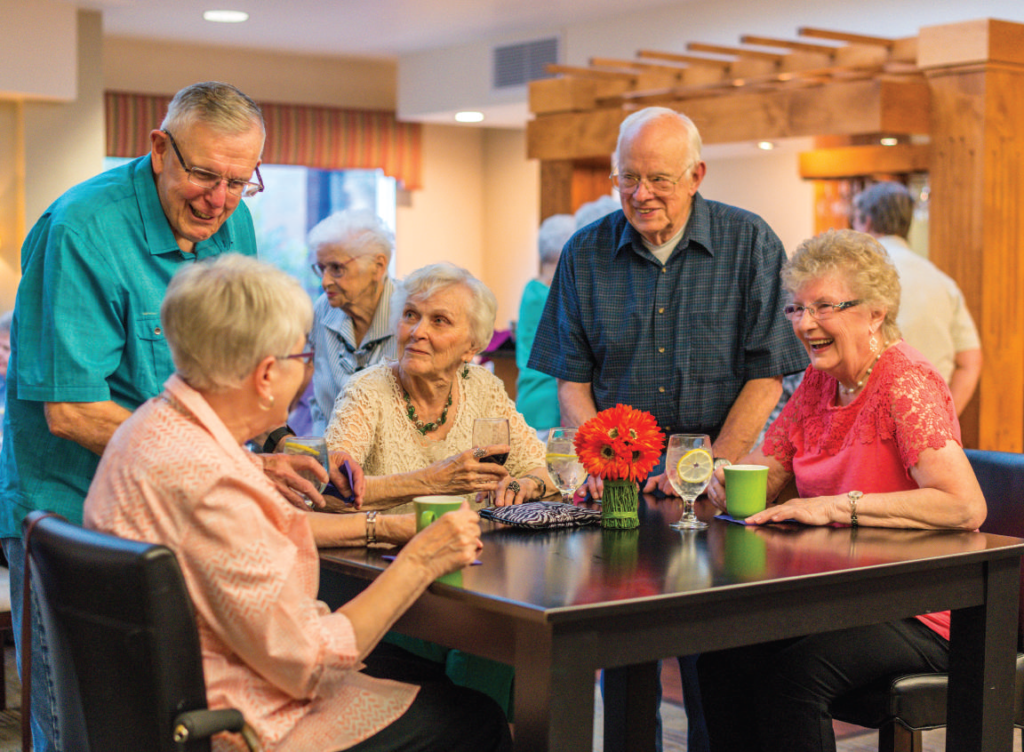
When you hear the term “senior living community,” what does it mean to you? Think about or write down a few phrases that come to mind. Now — which of those are actually true?
It’s not unusual for people to have misconceptions about what living in a Life Plan Retirement Community is like, especially if they haven’t had much experience with one. That’s why we’ve compiled five of the most common misconceptions — and some facts that just might change the way you view your retirement living options.
MISCONCEPTION #1: A SENIOR LIVING COMMUNITY WILL LIMIT MY FREEDOM, INDEPENDENCE AND CHOICES.
THE REALITY
• You’re free to do — or not do — exactly what you want.
You’ll have dining options that let you dine in or out with family and friends, cook for yourself or let the culinary team take care of it. You’ll have a host of classes, activities and programs to choose from. You can come and go as you please. Many residents will tell you they’re now doing more of what they love than they did when they lived at home. When you live in a senior living community, the hassles of maintenance, yardwork, repairs, even housekeeping are gone. You can replace them with more meaningful activities such as volunteering, cultural events, travel, continuing education, personal projects and socializing with both old and new friends.
• A senior living community can offer things living at home can’t.
You’ll have dining options that let you cook for yourself or let the culinary team take care of it. You’ll have a host of classes, activities and programs to choose from. You can come and go as you please. Many residents will tell you they’re now doing more of what they love than they did when they lived at home.
MISCONCEPTION #2: I’LL BE SURROUNDED BY OLD, FRAIL PEOPLE.
THE REALITY
• Today’s senior living communities are full of accomplished, active people.
Talk to nearly anyone who lives in a Life Plan Retirement Community, and the first thing they’ll tell you is that they live among interesting, lively and entertaining people. Consider the fact that it’s easier to make friends, socialize and do fascinating things together. You’ll quickly realize that life in a senior living community is a whole lot more active than you ever imagined. At the end of the day, you can be as social as you want or keep to yourself. It’s entirely up to you.
• There are plenty of opportunities to mix with people of all ages.
Just because it’s a senior living community doesn’t mean it’s a community made up of only older adults. Many communities employ young adults as servers in the dining room, and residents often form close, meaningful relationships with them. There are many other staff members of varying ages that help a community function. You’ll often hear residents and staff talk about how they feel like one big family. Some communities have vibrant intergenerational programs that connect residents with students from local colleges, high schools and even preschools. And, of course, you have the freedom to mix and mingle with people of all ages outside the community too.
MISCONCEPTION #3: MY MORTGAGE IS PAID OFF, SO A MOVE DOESN’T MAKE FINANCIAL SENSE.
THE REALITY
• Your home expenses may be higher than you think.
When you add up all the normal monthly home maintenance costs, they’re often higher than you might imagine. When you factor in the unexpected expenses that every homeowner faces, the costs of maintaining a home become even higher. In addition, a senior living community includes activities and amenities — pools, gyms, classes, transportation, lectures and so on that make it an even better value than living at home.
• Life changes mean house changes, and that can get costly.
Houses are a wonderful reflection of our lives, but they don’t adapt as easily to our changing needs as we might like. In fact, a Harvard study found that only about 1% of existing houses are suitable for successful aging in place — which means most houses aren’t necessarily safe to keep living in as you get older. Senior living communities are designed with safety, mobility and comfort in mind.
MISCONCEPTION #4: IF I NEED HELP OR HEALTH CARE, I’LL GET IT AT HOME.
THE REALITY
• Long-term health care costs could devastate you financially.
Without a plan in place for future care, the financial strength you’ve spent years creating could be depleted. If you remain in your house and an accident or illness forces you to seek long-term care, you may have to make a forced decision. You may not be able to get into the community of your choice and you’ll pay higher current market rates for your care. Meanwhile, you’ll still have costs associated with maintaining your house and modifying it to meet changes in your physical abilities.
• A senior living community makes everyone’s life easier.
These communities have been designed #4: precisely to make your health care as seamless and efficient as possible. By thoughtfully and carefully making the decision while you’re healthy, you’ll be prepared for the what-ifs, relieving your family of the burden of making hasty decisions during a time of crisis.
If you’re moving into a community as a couple, you’ll be in the same community, even if your short- or long-term level of living isn’t the same. Daily visits are right on campus, rather than a lengthy car ride to a stand-alone rehabilitation or care center.
MISCONCEPTION #5: I’LL MAKE THE MOVE IF I NEED TO.
THE REALITY
• You can wait too long.
The biggest regret of most residents is that they waited too long to move in. With so much to do and so many people to meet, residents discover that senior living is immensely more rewarding and active than they imagined, and they wish they hadn’t stayed so long in their home. Another thing to consider is if you wait too long, you may not be considered healthy enough to enjoy or qualify for independent living, and only be able to move into assisted living or a higher level of care. Your choices become limited.
• Living alone is bad for your health.
Studies show that social isolation — especially among seniors — can be as devastating to your health as smoking and other unhealthy habits. Even if isolation is only half as bad as they suspect, it still takes a physical and mental toll on people of all ages. The companionship that comes so easily to residents is more than an emotional boost — it improves physical well-being too. Why wait and risk making your health worse?

If you’d like to discuss any of these topics, or learn more about how our community busts some of these common myths, please give us a call.
Capital Manor is the only true not-for-profit Life Plan Community within 30 miles of Salem, Oregon.

